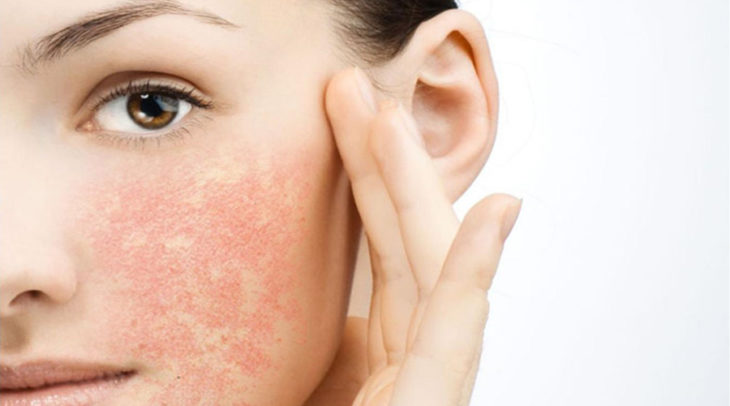Dry skin is a widespread condition that many people experience at least once in their lives. It is caused mostly by environmental factors, such as the weather or the heat in your home. Sometimes it can be caused by other skin conditions such as psoriasis or eczema.
During the winter period, in particular, many people might have dry skin and be unsure of how to treat it. Luckily, there are several ways you can take care of your skin and keep it replenished and looking healthy.
Contents
What Causes Dry Skin?

Source: I Love Durban
The epidermis, also known as the top layer of the skin to you and me, is made up of many skin cells and a lipid barrier. The lipid barrier helps to keep harmful substances getting into the body, and it also acts as a barrier to keep moisture in.
One of the reasons you might experience dry skin is aging. When our skin ages, the lipid barrier becomes weaker. Another reason why you might have dry skin is because of environmental problems, such as cold weather or excessively washing.
How to Tell if You Have Dry Skin

Source: Daily Advent Nigeria
There are different symptoms and signs, depending on your age, health, how much time you spend outdoors, and what caused the problem in the first place. However, if you’ve noticed that your skin is dry to touch and looks rough, then you have dry skin.
Other symptoms of dry skin include your skin feeling tighter than usual, mainly after you’ve emerged yourself in water for a while, such as having a bath or going swimming. Another symptom to look out for is skin that feels itchy. If you have itchy skin due to dryness, then you might also notice your skin flaking or peeling.
According to Thegoodestate.com, “Cracked skin is also another way to determine if your skin is dry. Sometimes this cracked skin might be painful and can even bleed, so it is important to treat dry skin as soon as possible. If you’re aware that your skin is prone to dryness, then you might also choose to take several measures that can help prevent getting dry skin.”
How to Prevent Dry Skin and How to Treat It

Source: LifeProviDR
To prevent developing itchy and dry skin and to treat it, there are various things you can try. Most of these you can do at home and don’t include going to the doctors. However, if your skin doesn’t improve after you’ve tried to treat it, then make sure you book an appointment with your doctor.
-
Moisturizing
The first one is frequently moisturizing your skin. Moisturising your skin helps to seal it so that water doesn’t escape. Try doing it at least twice a day, once in the morning and once at night to help keep your skin hydrated and smooth. If you’re trying to treat dry skin, then apply moisturizer when you think your skin needs it, this could be several times throughout the day.
-
Don’t Take Long Showers or Baths
Reduce your time in the shower or the bath and only spend 10 minutes cleaning yourself. Extensive water exposure can get rid of your skin’s essential oils, which leads to skin dryness and discomfort. You should also make sure that your showers or baths are warm and not hot.
-
Avoid Using Harsh Cleaning Products
When you shower, bathe or wash your hands, make sure you are using products that aren’t harmful to your skin. Certain cleaning products may contain ingredients that strip the skin of natural and necessary oils. Before buying products, make sure you check the label to see what parts are in your soaps and shower gels. Choose to buy products that are for sensitive skin or ones that contain moisturizing qualities.
-
Cover Up Your Skin
Winter can be a tough season on the skin, so make sure you cover up your skin as much as possible. For example, if you know your hands get dry in winter, then make sure you always wear your gloves when you go outside. It might also be a good idea to wear a hat and scarf to cover up areas that are exposed to cold weather.
-
Try a Diet Change
Eat more healthy fats to try and help prevent dry skin. Foods that are rich in healthy fats include walnuts, avocados, and olive oil. It would help if you also cut down on alcohol, caffeine, and coffee, as these drinks can cause dehydration. Instead of drinking these fluids, try swapping some of them for water. Drinking plenty of water can help to keep you and your body well hydrated.
When Should You Seek Medical Help?

Source: Medical News Today
For the most part, you should be able to treat dry skin by following our guide and at home. However, you might need to see a doctor if your skin is showing no signs of improvement after you’ve tried to resolve the dryness. If you’ve been moisturizing and using less harsh products on your skin for several weeks, but you haven’t seen any improvement, or your skin has become drier, then make sure you get an appointment with your doctor.
You should also seek medical help if your skin is accompanied by redness or if the dryness and itching are preventing you from sleeping. If your skin has open sores or is infected due to scratching it, then you should also go to the doctors. Alternatively, if you have noticed that large areas of your skin are scaling or peeling, then you should seek medical help.
Going to the doctors will help you to control your symptoms and find out more about why your skin is so dry. Common conditions that can sometimes be mistaken as dry skin include inflammatory skin conditions such as atopic dermatitis, psoriasis, and ichthyosis. Fungal infections can also portray similar signs to those of dry skin but won’t be able to be treated with some home remedies.
For more excellent skincare advice, please have a look at our article on how you can tighten loose skin.
